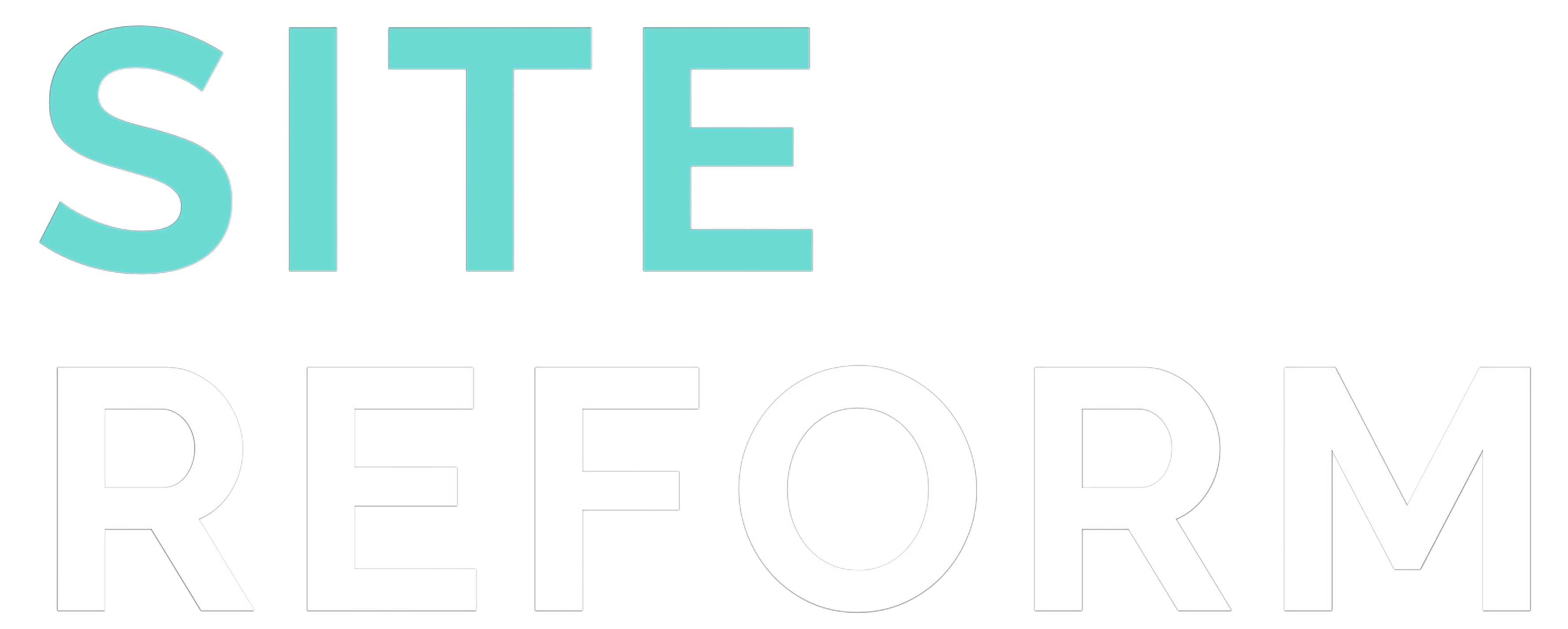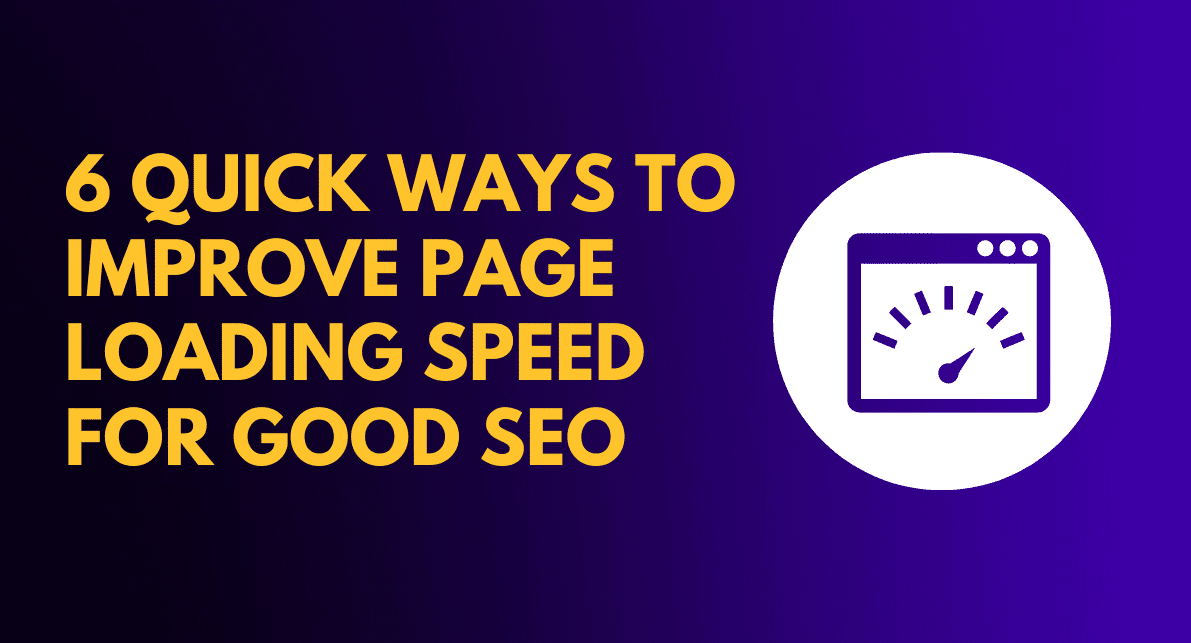Will you wait longer to load a webpage while surfing the internet?
No!
If you have ever tried to open a website that takes too long to load, you know how frustrating it can be, and the same with all other people.
So if you’re a blog/website owner, there’s ONE essential thing you always need to consider – website speed.

Page speed is very important for the users to experience a smooth and efficient browsing experience. If your page takes too long to load, users will get frustrated and leave your site.
According to research by renowned marketing expert Neil Patel, 47 percent of visitors expect a website to load in no more than two seconds.
Table of Contents
How to Check Your Website Speed And Performance?

“How can I check my website speed and performance?” – this is one of the most asked questions by blog/website owners.
Well, I will list some free tools below that can help you test and analyze your site’s loading time.
Google PageSpeed Insights
PageSpeed Insights is a Google-developed tool that analyzes a web page’s content and provides suggestions for making it faster.
If you wish to optimize one particular page, enter the URL of that page in PageSpeed Insights, then click on the Analyze button.
Google Instantly provides a performance evaluation score for your website based on several best practices for web performance optimization.
The higher the score, the faster and more optimized your web pages are. The results will also show several recommendations from Google to improve your site’s performance.
Below is a picture of how it looks;

Our score on desktop and mobile versions is 96 and 70, respectively.
Based on these Performance scores ranges, the color-coding is as follows:
0 to 49 (slow): Red
50 to 89 (average): Orange
90 to 100 (fast): Green
Pingdom Tools
This free website speed test tool lets you quickly find and monitor your website’s uptime, performance, and interactions for a better end-user experience.
Enter any URL or individual URL and click the start test button to begin. In addition, you can test your website from a wide range of countries.
Below is a picture of how it looks;
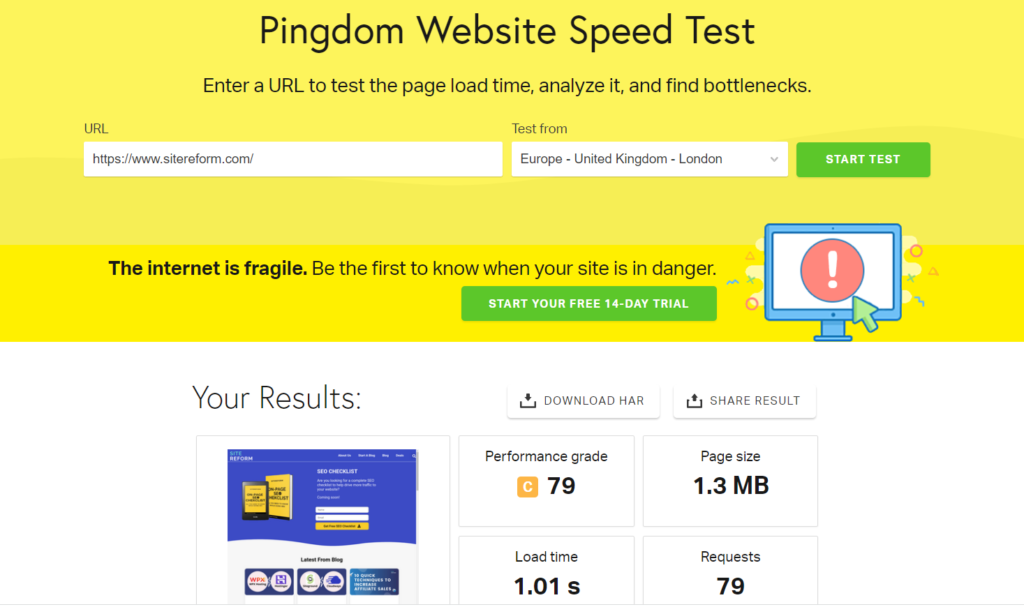
You can find a ton of data about your website in the above image, such as;
- Performance grade
- Page size
- Load time
- Number of requests
- Content size by content type
Furthermore, an improvement section called “Improve page performance” gives you all the tips to improve your website performance and speed.
GTmetrix
To test your website speed, you can use GTmetrix, one of the most popular tools for website speed optimization.
You can instantly obtain a report of your website’s performance by typing your website URL. Scores and recommendations are generated using a combination of Google PageSpeed Insights and YSlow.
GTmetrix is easier to use than other development tools, and beginners can adapt quickly.

It includes a lot of details, as you can see above, including:
- GTmetrix Summary
- Performance
- Structure
- Waterfall Chart
- Video
- History
Why is Page Speed Important?
Increases Bounce Rate– A high bounce rate will cause visitors to leave quickly.
Reduces conversions – A low page speed will increase bounces because customers cannot load and view the pages they want quickly enough, causing them to leave without action.
Decreases Ranking in Search Engines – A slow website will have difficulty ranking in the search engines.
Diminished User Experience– A slow-loading website reduces customer engagement by providing a terrible user experience and ultimately declines conversions.
What is a Good Page Load Time?
You should make sure that your website loads as fast as possible!
In Google’s estimation, the acceptable load time for a website is two seconds. According to Google, we strive to load websites in under half a second.
In approximately 25% of the web, a site will load in 5 seconds or less.
In approximately 50% of the web, a site will load in 2.9 seconds or less.
In approximately 75% of the web, a site will load in 1.7 seconds or less.
In approximately 94% of the web, a site will load in 0.8 seconds or less.
6 Quick Ways to Speed Up Website?
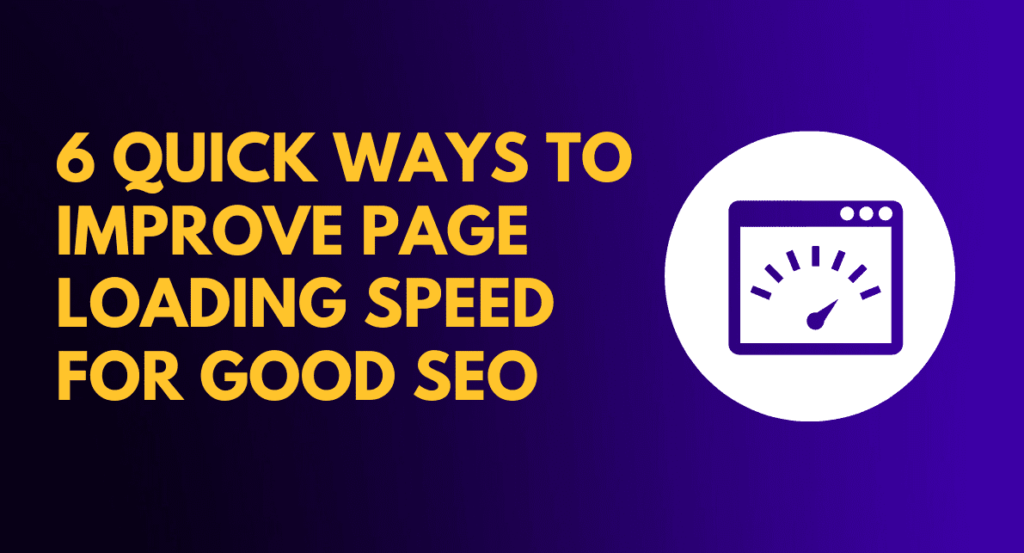
1. Move to Faster Web Hosting
Many factors can influence your website speed, but our #1 spot on the list is Fast Web Host because we know how vital a web host is to a site’s speed.
Hosting plays a significant role in the speed of most websites. A web host’s performance is crucial in determining your website’s speed.
The world is moving fast, and if you want to stay in the game, you’ll need to proceed with a faster web host.
The speed of your web host is determined by a few factors, including;
- Look for web hosts who use Solid State Drives (SSDs) since they are significantly faster than hard disks (HDs)
- Hosting web servers that are cloud-based loads faster.
- A CDN helps load and run your website faster and more efficiently, even when you’re on the other side of the globe!
- Is your host capable of scanning for malware? Some hosts offer this service for free.
- Make sure you look at the levels of security a potential web host offers, especially at the server level.
2. Reduce Image Sizes
We know you don’t want Google to hate your website.
Even if you are unaware, images consume a lot of space and strain your website’s databases, which ultimately causes them to load slowly.
It does not matter what web host you use. If you use too many images, your page will take longer to load. Hence, optimizing image sizes is vital for improving website loading times.
Before uploading images to your server, resize the images in size (use an online image optimization tool).
Using WordPress, images can be optimized even after uploading to your site. Fortunately, a few excellent image optimization plugins are ShortPixel Image Optimizer, WP Smush, and EWWW Image Optimization.
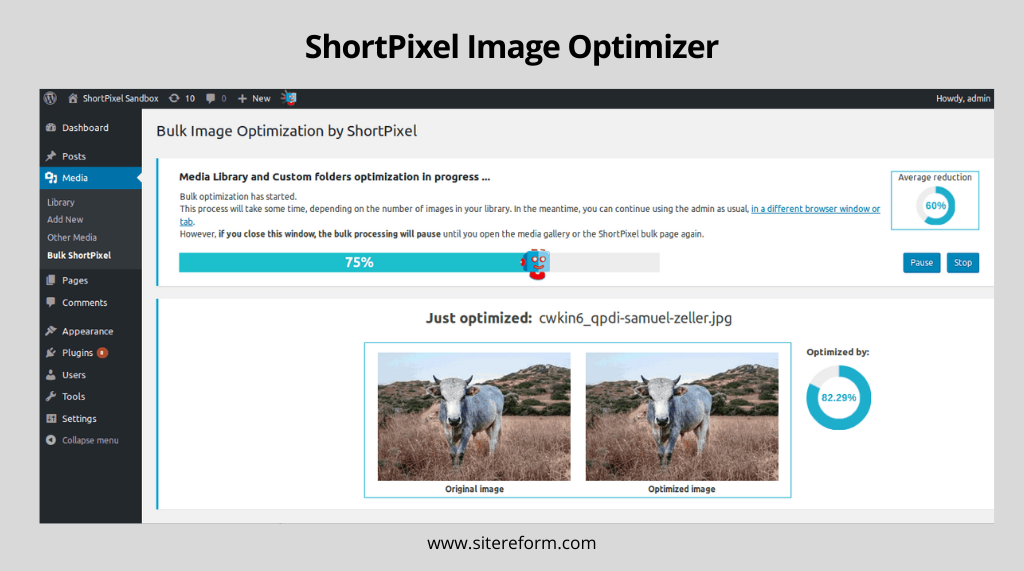
- The ShortPixel Image Optimizer plugin compresses 100 images per month.
- It can compress many files, including PNG, JPG, GIF, WebP, and even PDF documents.
- Compression can be lossy or lossless.
- ShortPixel uploads your images to the cloud and then replaces the originals with optimized images once they are processed.
- The original files are backed up, so you can restore them manually if necessary.
- Bulk conversion of gallery files is also available.
- There are no file size restrictions.
3. Minimize HTTP Requests
HTTP allows data to be sent between a client and a server.
Your browser requests a server request whenever it requests any resource from your hosting servers, such as images, Javascript files, etc.
The fewer requests the server makes, the faster the website will load.
Basic principles of HTTP requests:
More Files = More HTTP Requests
Bigger Files = Longer HTTP Requests
You need to reduce server requests to improve your site’s loading time. Tools like Pingdom Tools, GT Metrix, etc., can be used to figure out what server requests are required by your website, as mentioned above.
How to Optimize HTTP Requests in WordPress :
- Remove Unnecessary WordPress Plugins
- Using lighter plugins instead of heavy ones
- Delete unnecessary images
- Use Lazy Loading for Images and Video
4. Use a Content Delivery Network
Do you have readers from different locations in the world? If yes, then you must use Content Delivery Network(CDN).
A content delivery network (CDN) is a global server network that stores and delivers content. The content could be images, videos, or other digital files.
CDNs are a critical part of the Internet infrastructure because they improve the speed at which web pages load by distributing the information across multiple data centers worldwide.
Simply put, CDN helps us connect with our audience worldwide.

Your website can benefit from CDNs in the following ways:
- Faster loading times for web and mobile users
- Protects your website from traffic spikes that can cause it to stop functioning
- Ensures site stability
- Enhances site performance and security
Most web hosts provide free access to a global CDN that ultimately speeds up your website. Cloudflare’s CDN also offers a free plan to access a worldwide Content Delivery Network (CDN).
CDNs are easy to implement. WordPress plugins can help you set up your site with a CDN provider without difficulty if you use WordPress CMS. You may also need to modify DNS records and change your domain’s name servers.
5. Minify and Combine Files
What do “minify” and “combine” mean?
Minify
By minimization, you remove all unnecessary letters, space, and white space in the code to run more efficiently on the machine running it. As a result, your files are much smaller, making them easier to transfer from the server to your browser.
Combine
Combining CSS reduces the number of HTTP requests on your site by combining all the CSS files into one CSS file.

In WordPress, minification and a combination of files can be done through WordPress plugins such as WP Rocket and WP Super Minify.
6. Activate Lazy Loading for Images
Lazy load is a term used to describe images or videos loaded as the user scrolls down the page.
Lazy loading is to load content in parallel with your scrolling on each image so it doesn’t take up much bandwidth while not affecting viewing performance.
Lazy loading is an across-the-board practice for SEO because images are essential to any website’s total size. The use of lazy loads improves website performance and increases the utilization of devices’ resources.
Recommended Tutorials for Further Reading:
- Create an Adsense-Friendly Website
- Write Quality Content as Beginners
- Image SEO Tips for Beginners
- Pogo sticking: How to Improve it for SEO
FAQs About Improve Page Loading Speed
What is page speed optimization?
Page speed optimization makes a website as fast as possible so that users have an enjoyable experience.
Does page load speed affect SEO?
Yes, page load speed does affect SEO. Slow-loading pages can impact your website’s ranking in search engines and may cause visitors to leave your site. Therefore, ensuring your website is as fast as possible is essential.
Why do faster websites matter in 2023?
There are many reasons why faster websites matter in 2023.
First, users want to interact with websites quickly. This is especially true for mobile users who expect websites to load fast and be easy to use.
Second, the world is going digital. More and more people use devices such as smartphones and tablets to access the internet. As a result, businesses need to have websites that load quickly to keep up with the competition.
Third, technology constantly evolves, and new technologies that make websites faster are being developed. For example, Google has released a PageSpeed Insights tool, which helps you optimize your website for speed.
Conclusion
As a website owner, you can’t afford to be slow. It affects your ability to generate leads and grow your business. You want people to come back again and again.
You should find this guide helpful in optimizing your site loading time and providing customers with a better experience. We welcome your questions in the comments below.
